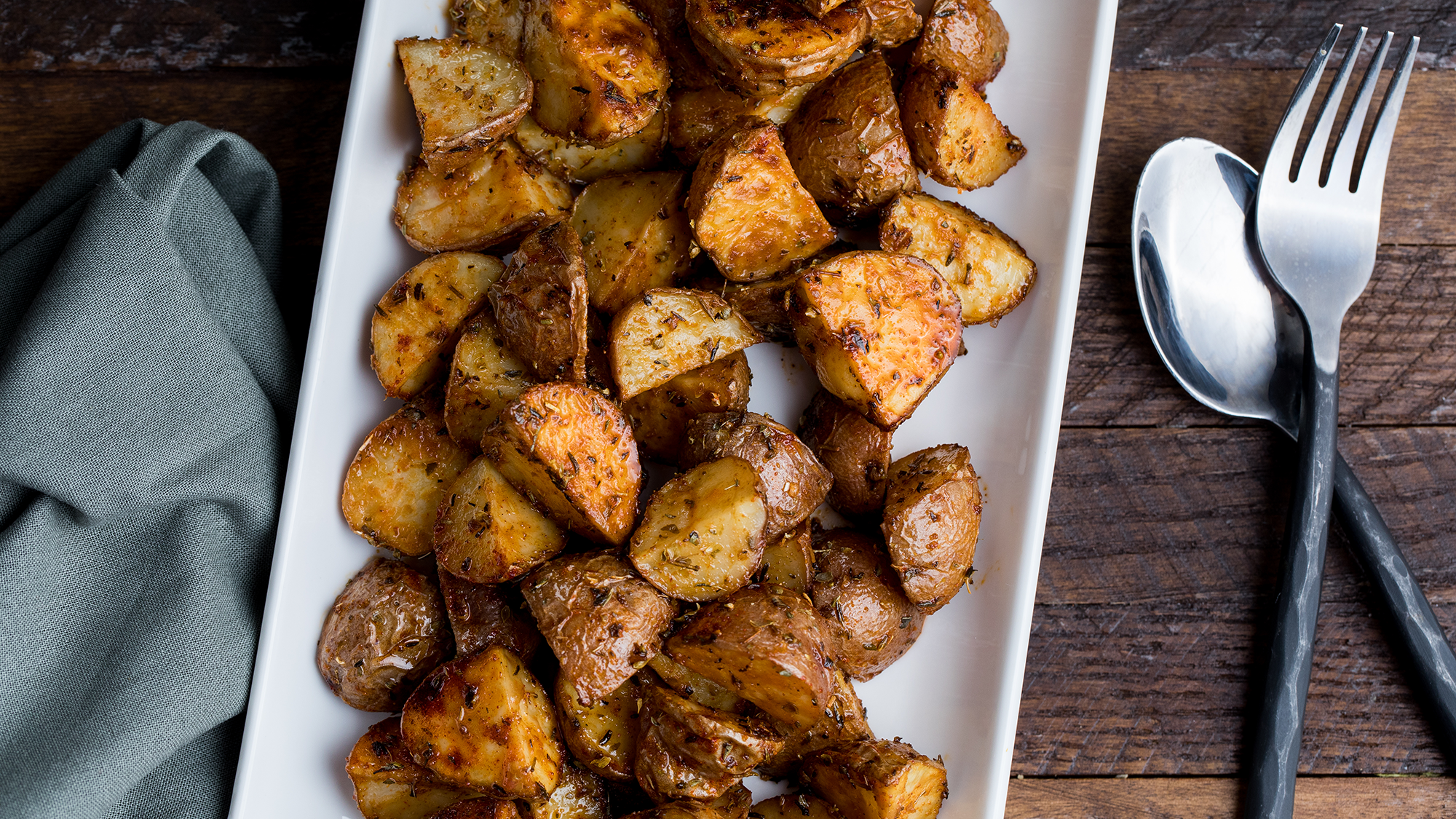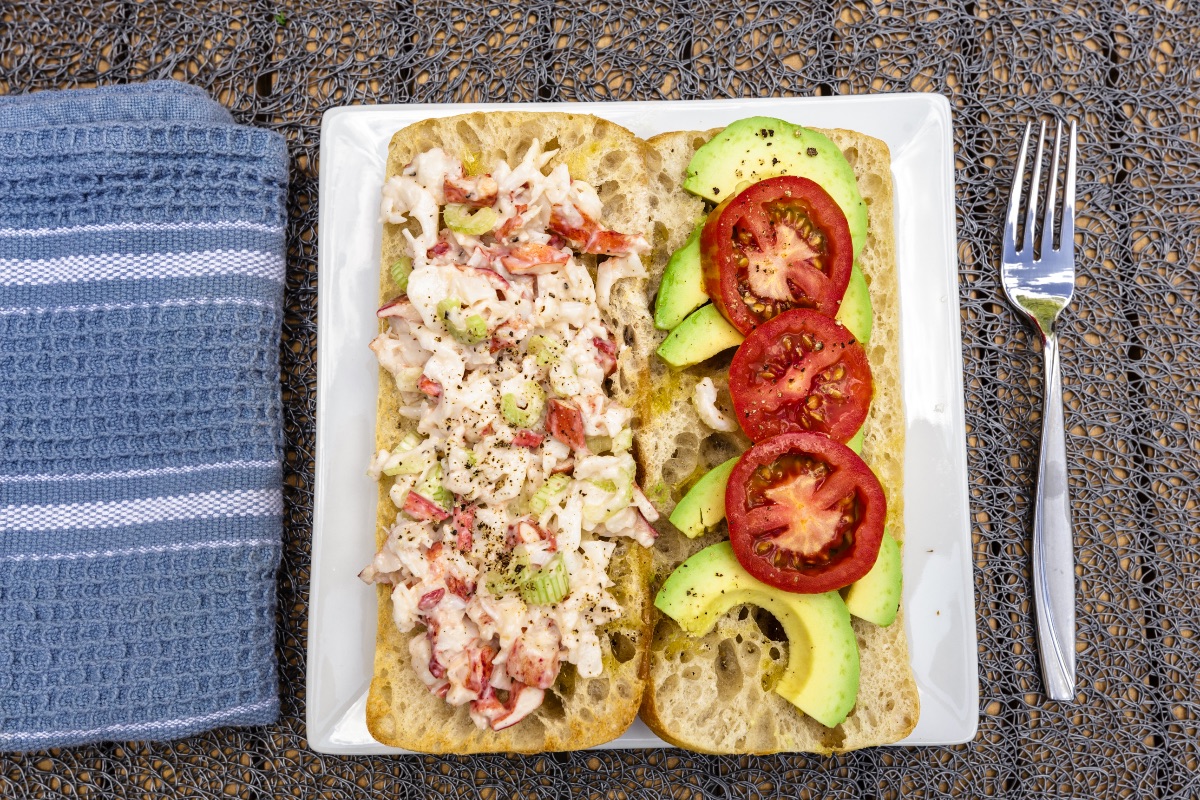When I first moved to New York, I noticed that people seemed to use “the Village” in reference to the East Village, the West Village, and Greenwich Village indiscriminately. Six years later, I’m convinced that you are supposed to infer from bar or restaurant namedrops exactly which is the Village in question. (And that everyone just calls all of them "the Village" because if New Yorkers love anything, it’s efficiency, and also a sense of subtle superiority of knowing something you don’t.)
It is the same with green sauce. In fact, “green sauce” is even less specific than “the Village”: There are only three possible Villages, but there are about a thousand different green sauces. And I am certain the same love of vagueness is at play, one placeholder for who knows how many variations, all supposedly recognizable by context. But maybe all we know is that the sauce is green, that it is a sauce, that it might be one of those famous ones (pesto, chimichurri, salmoriglio, salsa verde—itself a stand-in term that literally just means “green sauce”) or it might simply be a green sauce. Which witch is which?

Can you guess the name of this green sauce? Besides "delicious" and "useful"? Photo by Mark Weinberg
I cannot tell you that, but I can tell you that the best way to know something is to embed yourself with it. And you must embed with green sauce.
It is as simple as turning on your food processor and piling the verdant or once-verdant contents of your refrigerator into it, adding oil, and turning it on. Yes. That’s it. Now you know, and now you have something to spoon over fish or meat or eggs, mix into ground meat for herby meatballs, stir into rice or grains, marinate cheese in, fold into yogurt or sour cream for a quick dip, toss with potatoes, spread through a grilled cheese or quesadilla, or thin into a vinaigrette. Among other things. I hope you also know now that “green sauce” is a necessary vagueness: When making green sauce, one rarely knows exactly what it could be once they are done with it. It’s often a little spicy, and a little kicky with acid, sometimes creamy, sometimes thick, sometimes thin. But it is green, and it is a sauce.
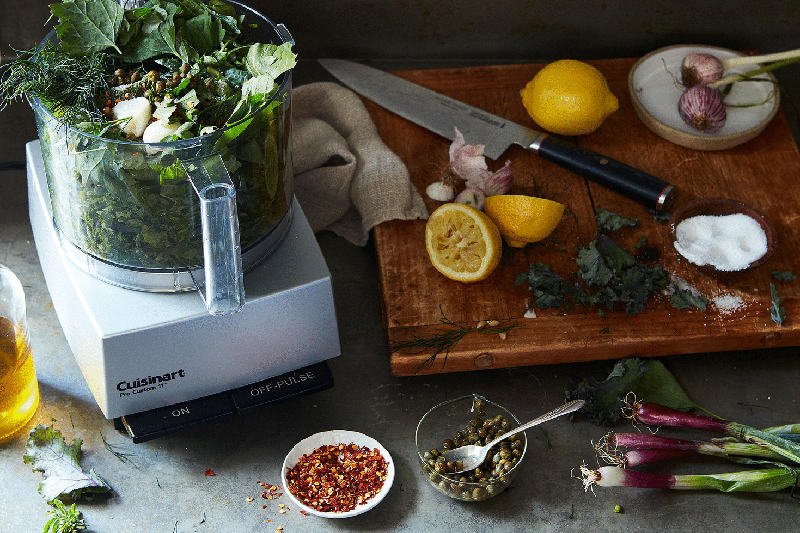
It's this simple. Photo by Mark Weinberg
All green sauces have a few things in common:
-
Greens, of course!: Think herbs, big leafy things like spinach and chard and kale, and green odds and ends—like carrot and radish tops, turnip and beet greens, droopy scallions, stems of things (like the aforementioned herbs and spinach and chard, etc.). Not to mention the less-mainstream greens you might have been tempted by at the market—sorrel, lambsquarters, nettles.
-
Oil: I most often reach for olive oil here, and it works for almost everything. However, if you were thinking of using your green sauce, maybe something with scallions and cilantro and a jalapeño and sesame seeds, in a stir-fry, you might choose a neutral oil (perhaps with a touch of sesame oil) instead. Up to you.
-
Salt: It could come simply in the form of a big three-fingered pinch of salt dropped into the food processor with everything else. But it could also come from hard cheeses like Parmesan or pecorino, capers, soy sauce, anchovies—all of which, in addition to being salty, add funkiness.
-
Punch: Acid and heat make green sauces addictive. Drop in hunks of garlic and/or shallot, a fresh chile, or a pinch of chile flakes. Doctor with vinegar—red or white wine or apple cider are my favorites—or lemon or lime juice.
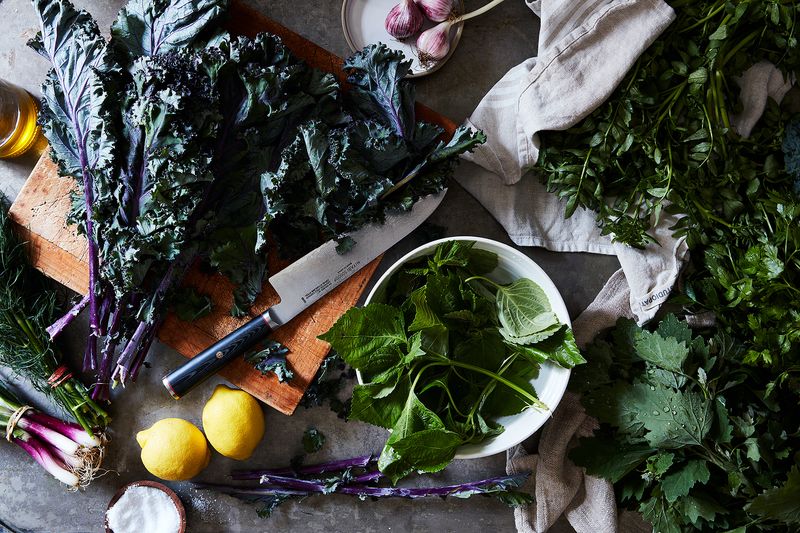
Walking in a verdant wonderland... Photo by Mark Weinberg
I am not going to give you any measurements for making green sauce, but I will say that you’ll need more of everything than you think you’ll need. And that you’re going to have to keep tasting and tasting, and that you’ll know when you’re there.
First, make sure your greens are clean. No one likes a gritty green sauce. Feel free to use greens that are on their last legs (in fact, I often take whatever’s left and wilting at the end of the week and use that to make green sauce), but anything that’s mushy or really gone south should be trimmed off and discarded. If they are large, roughly chop or tear them and their stems.
Add garlic, or any other hard-ish allium-type things you want (like shallots or ginger) into the food processor with a pinch of salt. If you’ll be adding more salty things later, make it a small pinch now. Pulse twice or thrice, until it’s broken up.
Now add your clean and roughly chopped greens and stems. Reminder that these can be anything. Yes, certain flavors will go best with certain things—a mintier sauce to serve with lamb, for example, and more acidic sauces for richer meats, and if your meal is French-ish then perhaps you might make a tarragon- and lemon-scented sauce. There are reasons that fragrant salmoriglio (oregano + parsley + garlic + lemon + olive oil), and bitey chimichurri (parsley or cilantro + garlic + chile flakes + vegetable oil + red or white wine vinegar) are so famous as to have their own names. But a carrot top salsa verde with capers and anchovies and olive oil and a fat pinch of chile flakes does not have a heritage nor a name yet other than “green sauce,” and I can tell you it is delicious on almost anything. Use what you have.
Add a long pour of oil over the greens, and pulse until the greens are finely chopped but not homogenous. Now it is time to consider if you want to make your sauce...
...thick: Add as little oil as you can and still be at a texture you’re happy with. Remember that it will thicken up in the fridge, too.
...thin: Add more oil. Or more acid. Or even a little bit of water, just a bit at a time. If you’re adding water, make sure you taste for seasoning after.
...acidic: All green sauce benefits from acid. The greens need it to taste alive. But you can add just a little (think the classic Genovese pesto) or a lot, especially if you’re serving the green sauce to cut through something rich on the table. Vinegars and citrus juices are classic, but you might also try tossing a couple of cornichons in.
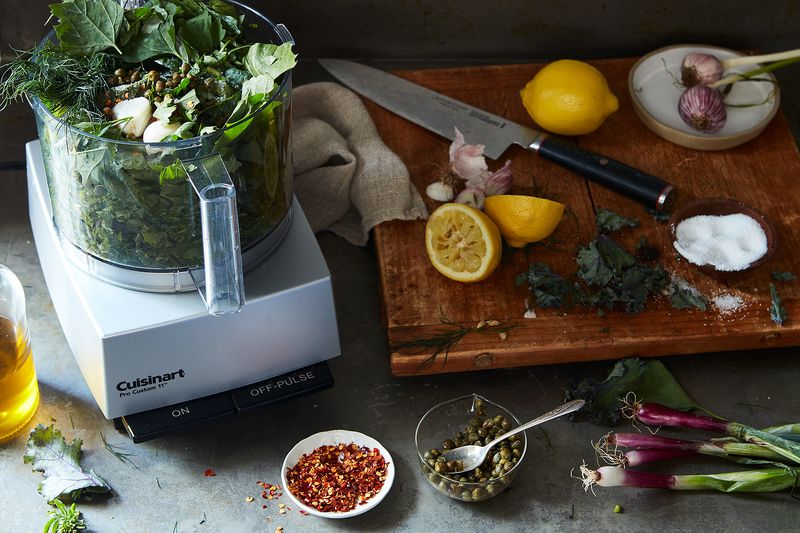
We used lemons for acid, capers for funk, and chile flakes for spice. And tasted and tasted. Photo by Mark Weinberg
...funky: Add a teaspoon of capers or an anchovy or two, then taste again.
...spicy: Add a pinch of chile flakes, or a fresh jalapeño or serrano chile. (Seed them if you only want a little heat.) More garlic or ginger or shallots will also fan the flames. Or try adding spices: Cumin or fennel or mustard seeds would all be really good.
...creamy: Use only a little oil and dribble in tahini or mayonnaise or yogurt, or add an avocado. Adding nuts, pumpkin or sunflower seeds, or a spoonful of nut butter will also make the sauce richer and slightly creamy. Creamy green sauces make great dips for a tray of crudités.
Pulse the sauce until it has the right consistency and tastes right to you—"right" being what you want. It will keep at least a week in an airtight container in the refrigerator.
This article was written by Caroline Lange from Food52 and was legally licensed through the NewsCred publisher network. Please direct all licensing questions to legal@newscred.com.



